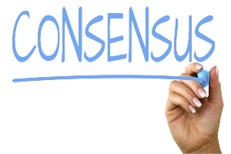A cooperative may or may not be the business structure to best meet the goals of future member-owners. The organizing group should compare multiple business structures before committing to forming the co-op. The group will meet and decide whether to move forward to form the cooperative or other “group-action” association. Leaders will emerge as the organizing group continues to meet.
PHASE 2. BUILDING CONSENSUS ON POTENTIAL FOR COOPERATIVE

| Steps | Individuals Involved |
| • Study organizational alternatives • Hold initial meetings to review scope and nature of cooperative solution • Discuss and agree upon cooperative approach |
• Potential members • Advisors • Consultants • Community leaders |
Action Steps
- Identify emerging leaders
- Seek and review information
- Organizing group meets to share and review information
- Budget created to examine costs to launch organization
Critical Questions
- Will forming a cooperative create the proper organizational structure to solve the group’s problem?
- How will a cooperative address the identified problem or seize the potential opportunity?
- How do the strengths and weaknesses of the cooperative compare with other business structures?
- Does a cooperative business structure best meet the needs of member-owners in terms of goals and control?
- What is the cooperative’s durable strategic advantage in the marketplace?
- Is there member willingness to support the organization?
- What are the anticipated returns and benefits to members?
- Does the group have the capability to make decisions?
- Are other businesses providing similar goods or services? If yes, what is the advantage of the cooperative?
Potential Pitfalls
- Cooperative approach not appropriate for addressing the problem
- Other options more viable than forming a cooperative
